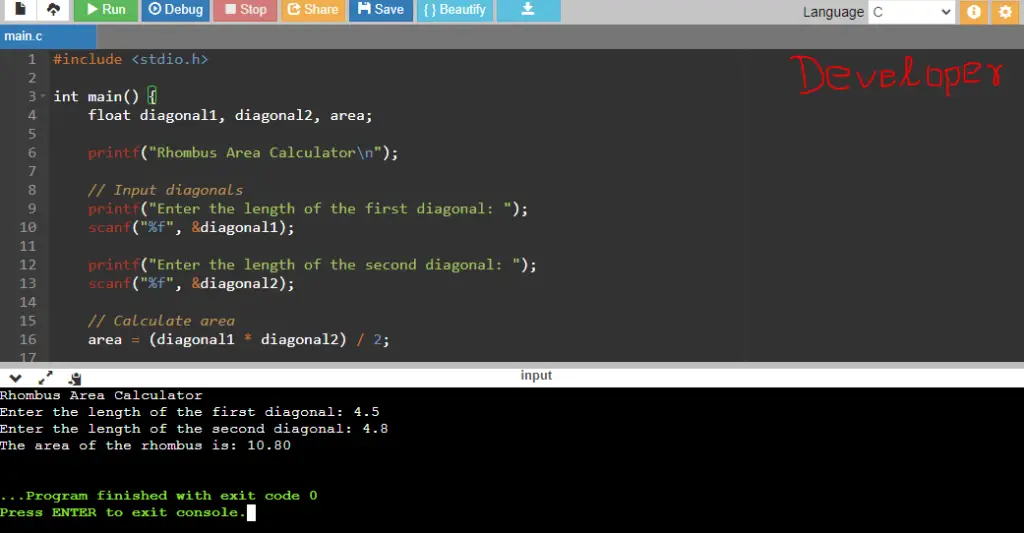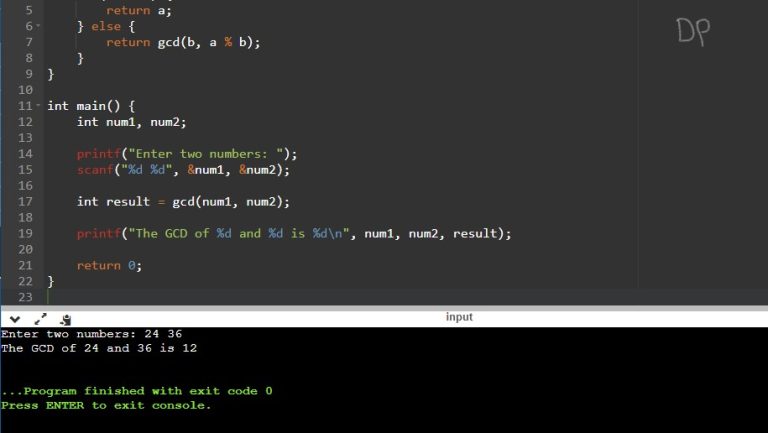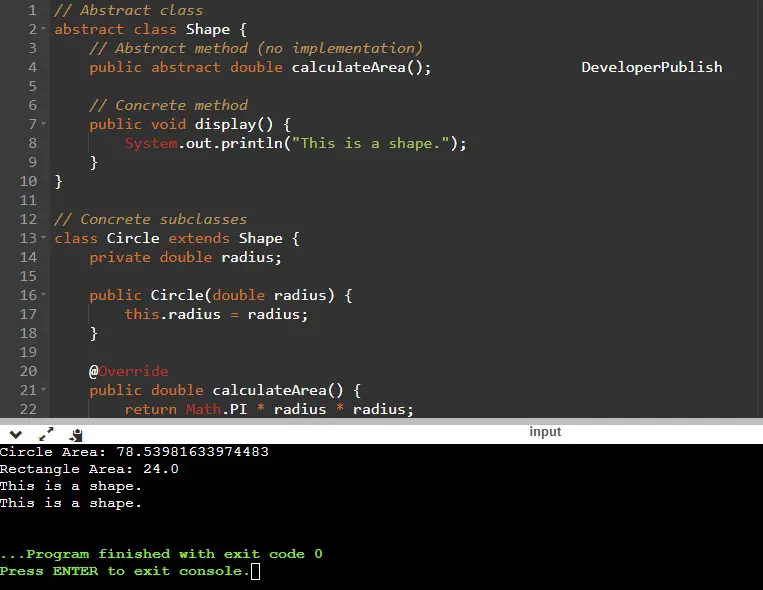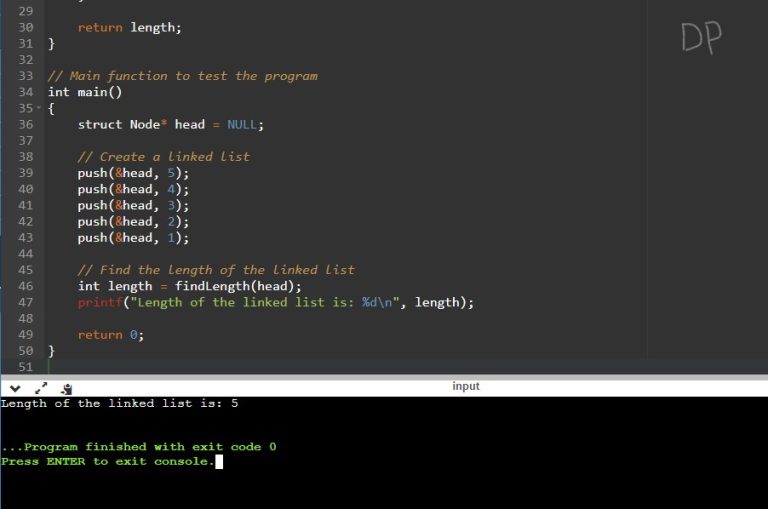This C program calculates the area of a rhombus using the lengths of its diagonals. It demonstrates a function to compute the area and ensures that the user provides valid input for the diagonals.
Problem statement
Given the lengths of the two diagonals of a rhombus, we need to find the area of the rhombus.
C Program to Find Area of Rhombus
#include <stdio.h>
int main() {
float diagonal1, diagonal2, area;
printf("Rhombus Area Calculator\n");
// Input diagonals
printf("Enter the length of the first diagonal: ");
scanf("%f", &diagonal1);
printf("Enter the length of the second diagonal: ");
scanf("%f", &diagonal2);
// Calculate area
area = (diagonal1 * diagonal2) / 2;
// Output the result
printf("The area of the rhombus is: %.2f\n", area);
return 0;
}How it works
- We start by including the necessary header file
stdio.h, which allows us to use functions likeprintfandscanf. - The main function is the entry point of the program.
- We declare three variables:
diagonal1,diagonal2, andarea.diagonal1anddiagonal2will store the lengths of the diagonals, andareawill store the calculated area. - We prompt the user to enter the lengths of the diagonals using
printfand read the input usingscanf. - The area of a rhombus is calculated by multiplying the lengths of its diagonals and dividing the result by 2. We perform this calculation and store the result in the
areavariable. - Finally, we use
printfto display the calculated area to the user.
Input / output




